In the year 1124, King David I decreed that the town of Edinburgh would become a royal burgh. Translation: this medieval town was now part of the royal realm. And since then this Scottish city has flourished.

This city of a half a million denizens is packed with diversions, both modern and historical. So much so, it begs the question: can you see and enjoy the sites of Edinburgh in two days?
The answer, of course, is a resounding yes! From Edinburgh Castle and the Royal Mile to St. Giles’ Cathedral and the Scottish National Museum, you can spend 48 hours in Edinburgh and feel like you got a great sense of this Scottish city.
If you’re coming to the “Athens of the North,” as this handsome city was called in the 19th century, here is an ideal two-day Edinburgh itinerary.
Day 1: Castles and Cathedrals
Stop 1: Edinburgh Castle
Begin the first day of your Edinburgh weekend trip at the most imposing structure in Scotland: Edinburgh Castle. Get to the castle on the early side—before 10am—to ensure you have some of the fortress to yourself before the crowds rush in. Want to have an even more exclusive look at Edinburgh Castle? Take a guided tour of Edinburgh Castle that includes early entry to this centuries-old fortress perched upon a high volcanic stone mountain.
Touring the castle, with or without a guide, generally takes about three hours. Make sure you stop and marvel at St. Margeret’s Chapel, a 12th-century stone sanctuary that is the oldest surviving structure in Scotland.
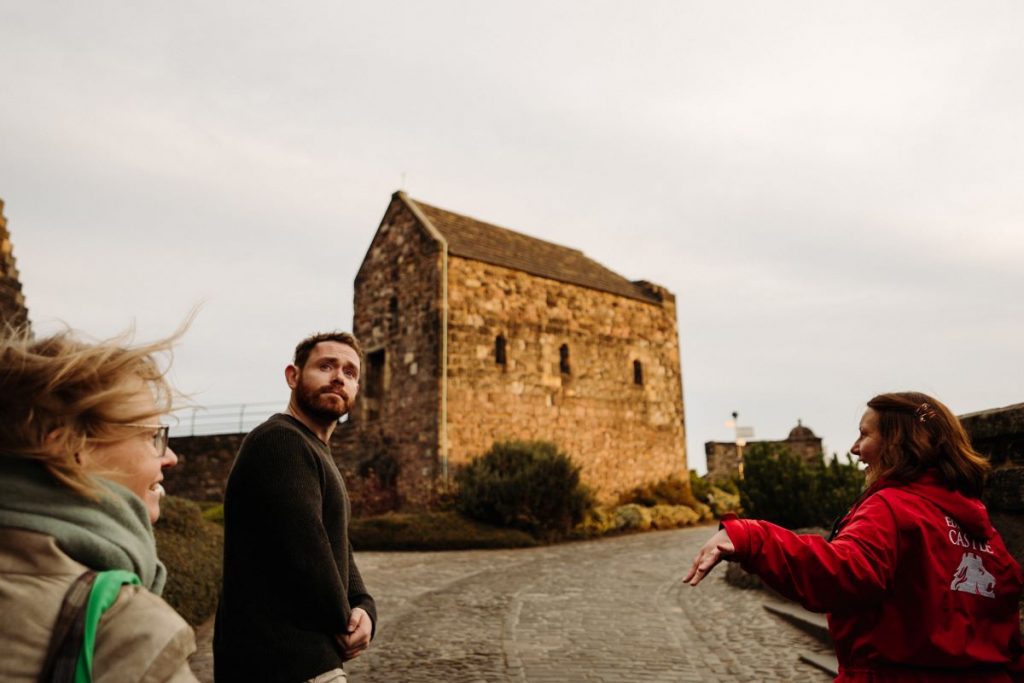
One of the quirkiest sites at Edinburgh Castle is the dog cemetery. The graveyard was founded in 1847, not coincidentally the first year of the reign of Queen Victoria, an avid dog aficionado. The first four-legged friend buried here was actually named Fido. All of the beloved canines buried at the cemetery, including Fido, belonged to the regiment who worked at the castle. Today, the cemetery is off limits to the public but anyone can see the graves near the Argyle Battery Ledge.
And if you’re still there at one o’clock in the afternoon, don’t miss the famed One O’Clock Gun: every day—save for Sundays, Good Friday, and Christmas Day—they fire a cannon, a tradition that’s been happening since 1861.

Stop 2: Shop, eat, and pray
From the castle, take an amble down historic and ambient Princes Street to admire the shops and high-end boutiques. Toward the end of the street, make a left on Leith Street to discover a great lunch destination.
Duck & Waffle in St. James Quarter is a centrally located eatery offers all day brunch, allowing diners to graze on cheesy polenta croquettes, slow-braised pork belly doused in gravy, eggs benedict with a duck leg, and/or a luscious foie gras crème brûlée.
For over 900 years, people have been piously entering St. Giles Cathedral in awe and wonder. You should, too. After all, it’s just a 10-minute stroll from Duck & Waffle.
This vast Gothic cathedral is a 14th-century masterpiece. The church is an exemplary reflection of Scottish history. For example, St. Giles became the HQ for the Scottish Reformation in the 16th century, as local reformer John Knox used to preach here.
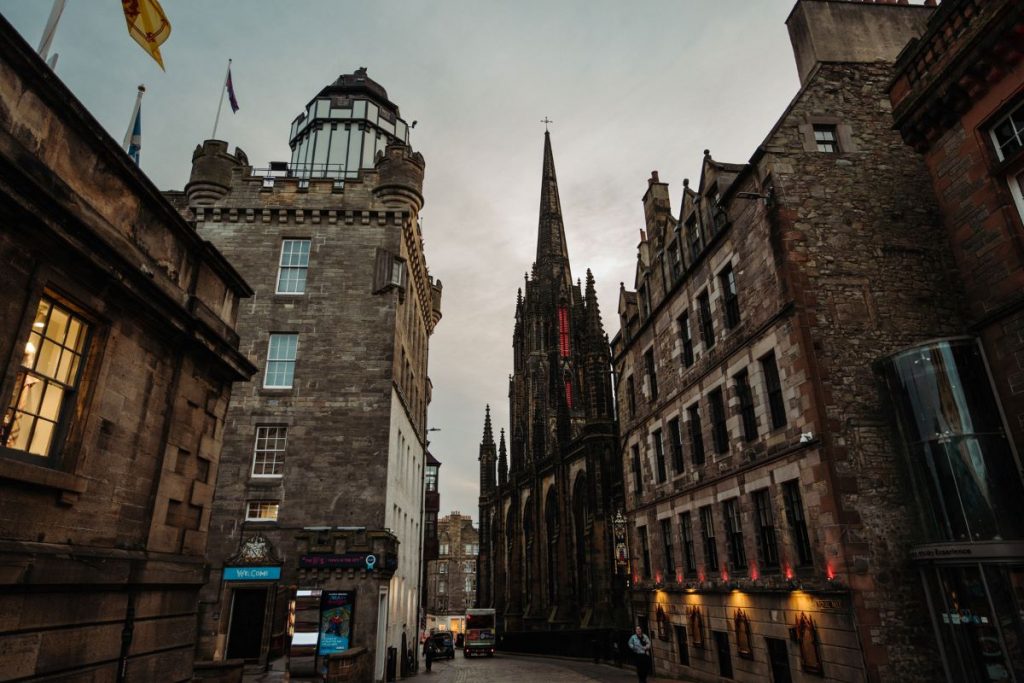
Day 2: Get High and Get Close
Stop 1: The Royal Mile
Pick up where you left off the day before in the center of town for your two-day Edinburgh itinerary. Start at the Royal Mile, a series of connected streets that make up a large swath of Edinburgh’s Old Town. Running one mile between the castle and the Holyrood Palace, the Royal Mile is an essential stop for your 48 hours in Edinburgh highlights.
During your amble, you’ll encounter some striking buildings, monuments, and attractions, including the 330-foot Lawnmarket, originally a place for selling and buying cloth and linen.
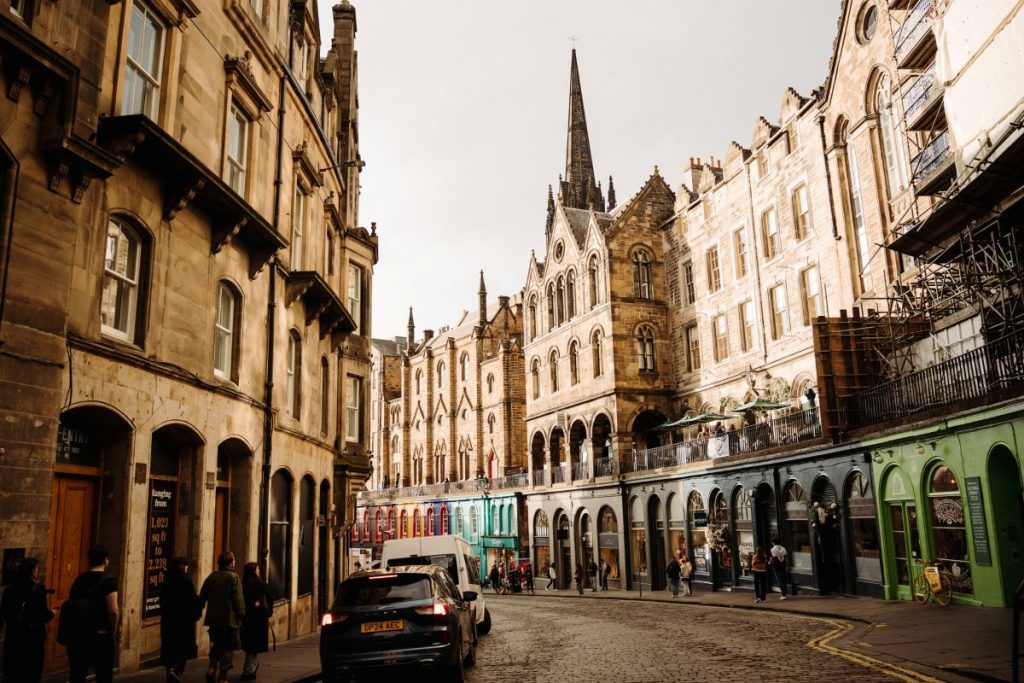
Stop 2: Mark King’s Close
Just past St. Giles Cathedral, when the Lawnmarket section of the Royal Mile transforms to High Street, you’ll encounter Mark King’s Close. In Edinburgh, a “close” is a narrow alleyway. In the 17th century when the Black Plague sprang up in Scotland, the city of Edinburgh was ravaged with sickness and death. As a result, the Scottish parliament closed many tight spaces, including the lane known as Mary King’s Close.
But in 2003, the space was unearthed and reopened as an historical tourist attraction. Only the brave should enter, though, as the space has been known to be crammed with paranormal activity. Some people have seen the ghost of a little girl named Annie and some employees refuse to enter certain parts of the close because of a dreadful vibe and energy they feel. Still, there are guided tours of the Real Mary King’s Close that will give you a sense of what 17th-century Edinburgh was like.
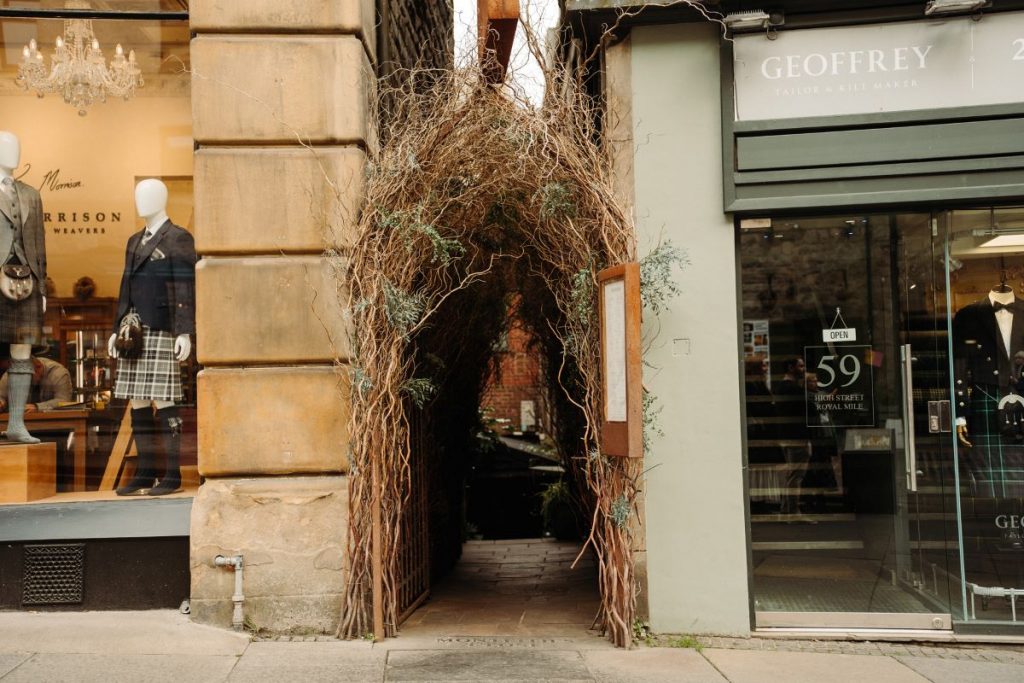
Stop 3: High Street and the National Museum of Scotland
The next swath of the Royal Mile is High Street, the most popular section of the legendary way. Here you’ll pass by Tron Kirk, a 17th-century church with its iconic steeple dominating the Old Town skyline, as well as John Knox House. Take your time while walking the Royal Mile. There’s a lot to take in. And if you want to get the most out of your 48 hours in Edinburgh, you could book a guided Edinburgh day tour that focuses on this part of town.
Not far from the Royal Mile is the National Museum of Scotland, a fascinating museum that puts Scottish history on display, exhibiting various religious and cultural artifacts throughout hits halls. One of the quirkiest are remains of Dolly the Sheep, the first mammal ever cloned by an adult cell. Named after Dolly Parton, the sheep was created from the mammary gland. The sheep was born in 1996 and, sadly, she died in 2003. Today you can see her stuffed remains here.
For dinner, stop by legendary White Horse Oysters & Seafood for Scottish-accented delights from the sea, such as crab-stuffed Scotch eggs, hand-dived scallops, and salmon tartar.
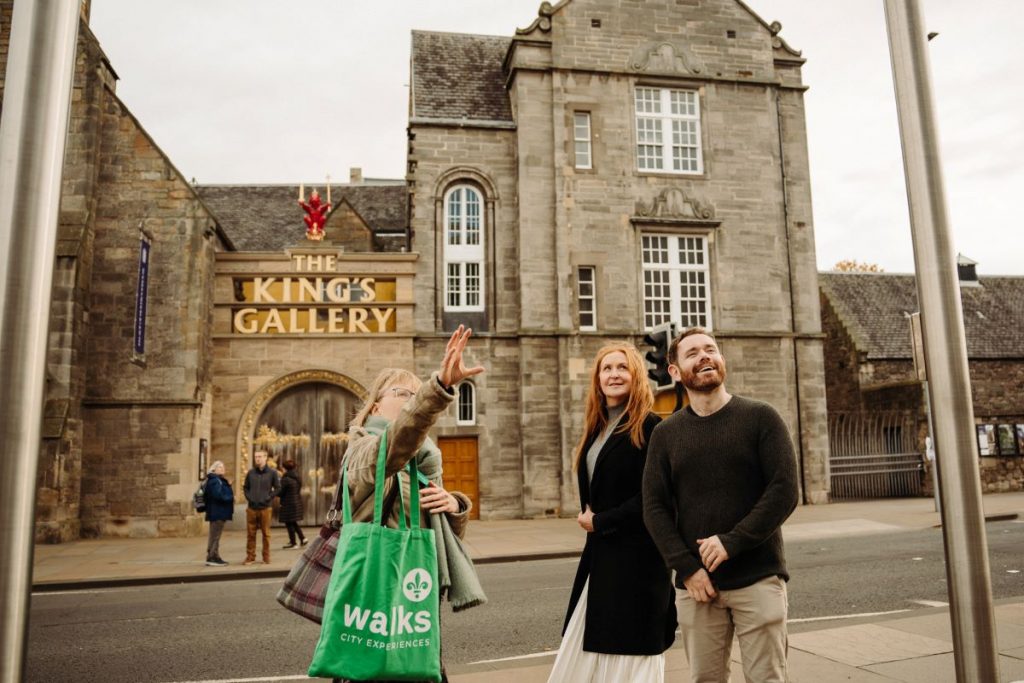
FAQs about Edinburgh
What is the best way to get around Edinburgh?
Edinburgh is a walking city in the purest sense. If you’re just going to stick to the center of town, the only vehicle you need is a comfortable pair of shoes. If you’re going to go further afield, the city has 50 bus routes and the fares are very affordable at £2 per ride. There is also one tram line and it happens to go to and from the airport.
What are the must-visit attractions in Edinburgh?
Most of the big attractions in Edinburgh are within walking distance and you can cover them in a couple of days, or if you have the luxury of time, three or four days. The highlights include Edinburgh Castle, the Royal Mile, Mary King’s Close, St. Giles Cathedral, the National Gallery of Scotland, and the National Museum of Scotland. If you want to venture out of the center, the waterfront neighborhood of Leith is worth a visit.
When is the best time to visit Edinburgh?
Because this Scottish metropolis is in the north, it doesn’t get oppressively warm in the summer months. So visiting any time between April and October is fine. That said, the shoulder seasons—April-May and September-October—are always optimum. If you come in winter, bring a heavy jacket.
When it comes to exploring Europe, Edinburgh is definitely a hidden gem that is often overlooked. The city is filled with historic landmarks, fascinating museums, delicious restaurants and taverns, and all kinds of quirky sites that are completely unique to Edinburgh (We’re looking at you, Mary King’s Close!).
And if you’re planning a trip to Edinburgh, why not sign up for a walking tour? Our Edinburgh in a Day Tour not only lets you discover the city’s hidden closes, narrow stairways, and secret gardens, but comes with an early access ticket to Edinburgh Castle before it opens to the public.

